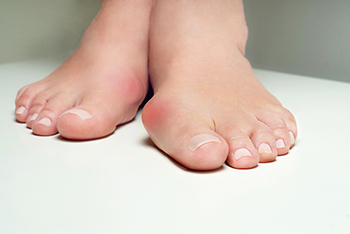The Best Shoes to Wear When You Have Bunions
Wednesday, 16 November 2022 00:00
A bunion is a bony deformity at the base of the big toe. This toe may start to point inwards towards other toes and the foot bones face out. Bunions often cause pain and swelling over the big toe joint. Reasons people get bunions are unknown, but they may be due to genetics, wearing ill-fitting shoes that are too tight, a foot injury, or arthritis. Wearing high heels can also increase the chances of one developing a bunion. Anyone can develop a bunion at any time in their life but the incidence of getting one rises by more than one-third after age 65. Also, women are more likely to suffer from this condition than men. When one has a bunion, the shape of their foot can change, and trying to find shoes that can be both comfortable and stylish can be frustrating. Wearing proper footwear for bunions is imperative to prevent worsening of the condition. Some tips for finding the right shoes include looking for shoes with a wide toe so the toes can splay rather than being pushed forward, opting for leather, suede, or elasticated materials which have more give, and making sure the widest part of the shoe corresponds to the widest part of the foot. If you suffer from a bunion, contact a podiatrist who can offer treatment options as well as more advice on selecting the best shoes.
If you are suffering from bunion pain, contact Brian D. Jackson, DPM of Neuhaus Foot and Ankle. Our doctor can provide the care you need to keep you pain-free and on your feet.
What Is a Bunion?
Bunions are painful bony bumps that usually develop on the inside of the foot at the joint of the big toe. As the deformity increases over time, it may become painful to walk and wear shoes. Women are more likely to exacerbate existing bunions since they often wear tight, narrow shoes that shift their toes together. Bunion pain can be relieved by wearing wider shoes with enough room for the toes.
Causes
- Genetics – some people inherit feet that are more prone to bunion development
- Inflammatory Conditions - rheumatoid arthritis and polio may cause bunion development
Symptoms
- Redness and inflammation
- Pain and tenderness
- Callus or corns on the bump
- Restricted motion in the big toe
In order to diagnose your bunion, your podiatrist may ask about your medical history, symptoms, and general health. Your doctor might also order an x-ray to take a closer look at your feet. Nonsurgical treatment options include orthotics, padding, icing, changes in footwear, and medication. If nonsurgical treatments don’t alleviate your bunion pain, surgery may be necessary.
If you have any questions, please feel free to contact one of our offices located in Columbia and Pulaski, TN . We offer the newest diagnostic and treatment technologies for all your foot care needs.







